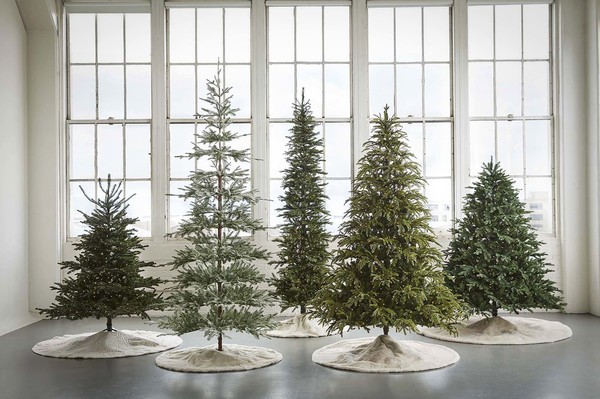
‘Tis the season for cozy sweaters, mistletoes, hot chocolate and eggnog. For those who celebrate Christmas, a festive tree is mandatory for the holiday. However, the question of whether to buy a real or artificial Christmas tree arises. What are the pros and cons of each option? Which is the more sustainable choice?
Pros and cons of real Christmas trees
No matter how enjoyable it may be to take out a dusty artificial tree from the garage, basement or attic, going to a local tree farm and bringing home a real tree will always be more memorable, festive and romantic. According to a survey conducted by the Christmas Tree Promotion Board, which polled 2,000 US parents with children age 17 or younger, bringing home a real Christmas tree was cited as being the top holiday activity that was enjoyed as a child.
“Nothing says ‘the holidays’ like picking out a real Christmas tree with your loved ones,” said Marsha Gray, executive director of the Christmas Tree Promotion Board. “The experience of choosing a real tree is a tradition to look forward to every holiday season and remember for years to come.”
Real trees also give off a sweet aroma that can’t be authentically replicated with candles. That being said, keep in mind that some people are allergic to the trees.
Most importantly, real trees are biodegradable and can be recycled. According to the United States Environmental Protection Agency, roughly 25 to 30 million real Christmas trees are sold in North America every year. The US Composting Council estimates that 90 percent of the trees are reused. The trees are typically reused as mulch for agriculture, gardening and landscaping.
“Christmas trees are low hanging fruit,” said Frank Franciosi, executive director of the US Composting Council. “It’s once a year. It’s not wet, slimy gravy with banana peels and apple cores and last night’s stew. It’s easy to chip, easy to get rid of and easy to reuse.”
As real Christmas trees grow, oxygen is produced and CO2 is absorbed, reducing the carbon emissions associated with factors such as transportation. Christmas tree farmers also ensure sustainability by planting one to three new seedlings for every tree harvested.
Pros of cons of artificial Christmas trees
One of the biggest factors that urge the purchase of an artificial Christmas tree is cost. With a real Christmas tree costing an average of approximately $75 USD, an artificial tree costs justs $107 USD. Because the artificial tree can be reused every year, a substantial amount of money can be saved.
Artificial Christmas trees also relieve the hassle of watering and trimming. In addition, artificial Christmas trees will not leave needles or sap on the ground.
Safety is also a key consideration. Unlike real trees, artificial trees feature fire-resistant properties, reducing the risk of an accident.
Unfortunately, artificial Christmas trees are typically made from metal and polyvinyl chloride (PVC). With an artificial tree lasting an average of five to seven years, it will eventually have to be thrown away in a landfill. Furthermore, around 85 percent of artificial trees sold in the United States are imported from China, resulting in a tremendous amount of carbon emissions.





